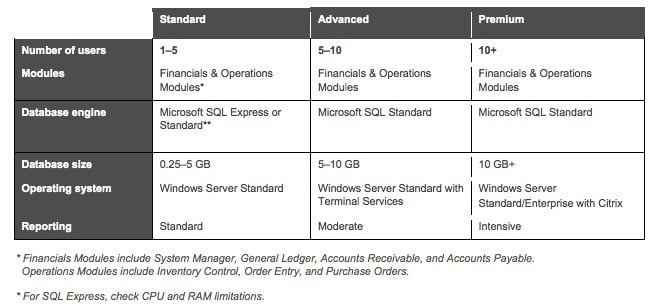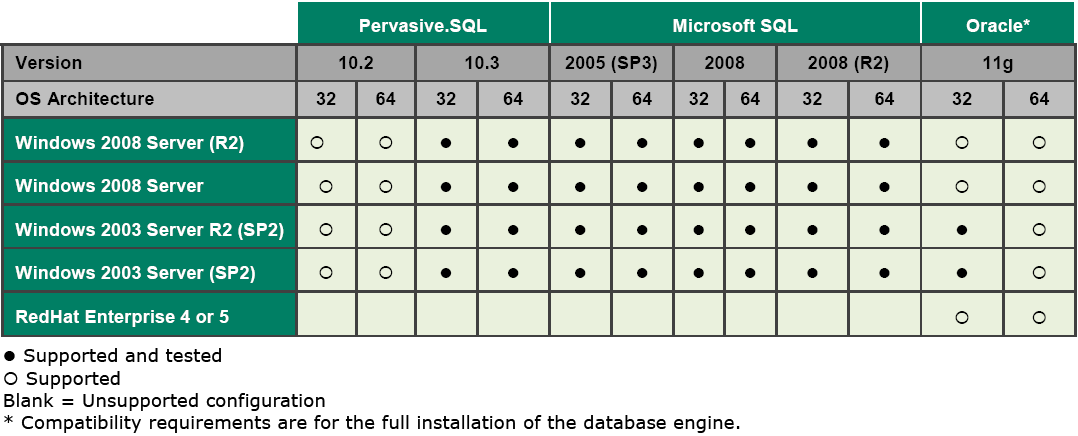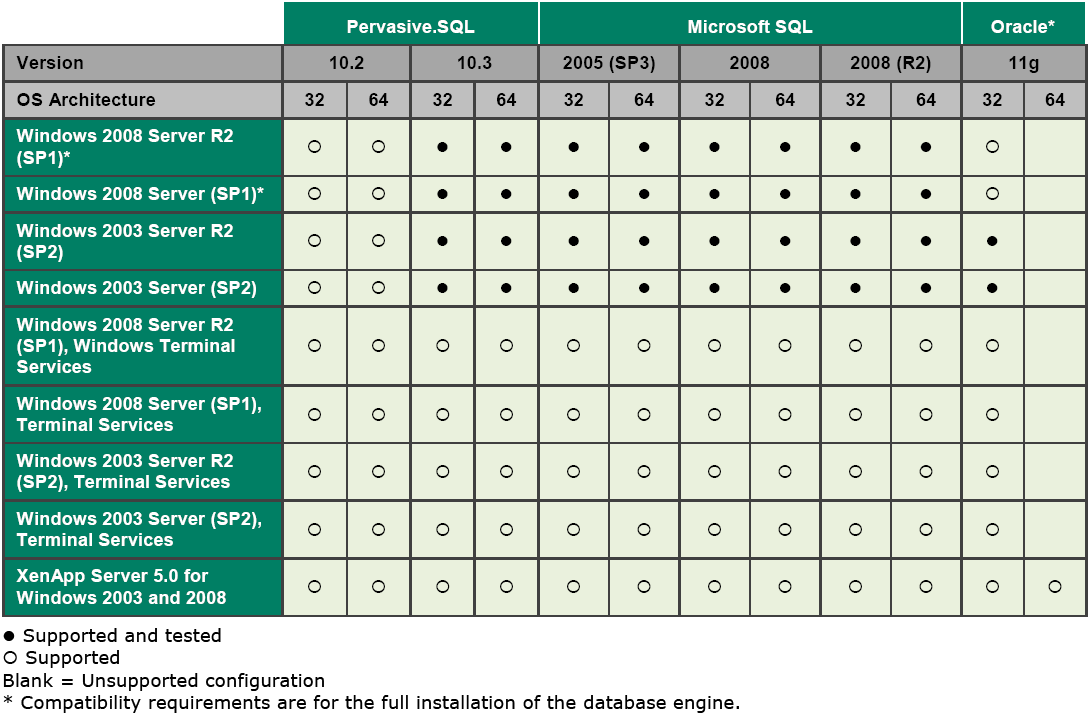Everything you needed to know about Sage.
This document is intended to cover all information regarding the compatibility of various operating systems and hardware with Sage 300 2016, Sage 300c and 2014 (Accpac 6.2) and CRM. You should assume that any operating system not listed in this document is incompatible with the current version of Sage.
Sage 300 ERP 2016 is supported in VMware ESX and Microsoft Hyper-V virtual environments. However, please note that our support teams will address only application related issues that can be replicated in a physical environment, and will not address performance issues in a VMware or Hyper-V virtual environment.
The key is to have them commit to matching or mirroring performance requirements detailed in our hardware requirements section. A certified virtual server consultant should be able to provide you with a performance baseline report that includes expected maximum processing throughput per active instance, and expected performance trends as additional virtual instances come online. This document should also include the expected margin of error during peak business operating hours.
| Small Business 1- 5 users |
Mid-Size Business |
Large Enterprise > 20 users |
|
| Workstation |
|
|
|
| Sage 300 Server |
|
|
|
| Sage Portal Server |
|
|
|
| Citrix or Terminal Server |
|
||
| Database Server |
|
|
|
| SageCRM Server |
|
|
|
* For SQL Express, check CPU and RAM limitations
Thinking about project cost management? We can help with Cloud Hosted Solutions or call us at 866-436-3530 to discuss hardware leasing options.

Many companies are using server virtualization, which allows multiple operating systems to be installed on a single server, and can reduce the amount of hardware that is required to run all the software needed by the business. Since virtualization allows a variety of operating systems and software configuration settings to be used on a single machine, application virtualization provides a much more flexible way for companies to run applications, such as Sage 300 ERP. The flexibility benefits of virtualization mean that all those operating systems and applications could potentially be run on a single piece of hardware. Sage 300 ERP is now supported running in virtualization environments using:
Supported database platforms for Sage 300 ERP 2012:
Thinking about project cost management? We can help with Cloud Hosted Solutions or call us at 866-436-3530 to discuss hardware leasing options.
| Small Business | Mid-Size Business | Large Enterprise | |
| # of Users | 1 - 5 | 5 - 10 | 10 & above |
| Modules* | Financials & Operations Modules | Financials & Operations Modules | Financials & Operations Modules |
| Db Engine | Pervasive.SQL / Microsoft SQL Express or Standard (x86 or x64) | Microsoft SQL Standard x64 | Microsoft SQL Standard x64 |
| Db Size | 0.25 - 5 GB | 5 - 10 GB | > 10 GB |
| OS | Windows Server Standard x86 | Windows Server Standard w/Terminal Services x64 | x86 and x64 Windows Server Standard / Enterprise with Citrix |
| Reporting | Standard | Moderate | Intensive |
* Financials Modules include: System Manager, General Ledger, Accounts Receivable, and Accounts Payable. Operations Modules include: Inventory Control, Order Entry and Purchase Orders.

Sage 300 will be supported running on:
| Sage 300 ERP component | Internet Explorer | Google Chrome | Safari | Mozilla Firefox |
| Sage 300 ERP Portal* (Navigation, Snapshots, Inquiry) |
V6.0 & 2012 releases | 2012 release | 2012 Release | 2012 release |
| Sage CRM | Version 7.1 | Version 7.1 SP2 | Version 7.1 SP2 | Version 7.1 SP2 |
| Sage CRM for iPhone | Version 7.1 | |||
| Sage CRM for iPad | Version 7.2 | |||
| Quote/Order ERP-CRM Integration | V6.0 & 2012 releases | 2012 release | 2012 release | 2012 release |
*IE support for the Portal requires a minimum of IE9
The following information is intended to cover all supported platforms regarding the compatibility of various operating systems with Sage ERP Accpac Version 6.0. You should assume that any operating system not listed below is incompatible with the current version of Sage ERP Accpac.
Sage Customer Support Services supports Sage ERP Accpac only on platforms that are listed as supported in this document. You can submit requests to support additional operating systems, as well as your suggestions for enhancing the product, to Sage ERP Accpac Ideas.
The Sage ERP Accpac Portal supports:
| Small Business | Mid-Size Business | Large Enterprise | |
| Workstation |
|
|
|
| Sage ERP Accpac Server |
|
|
|
| Sage ERP Accpac Portal Server |
|
|
|
| Citrix Terminal Server |
|
||
| Database Server |
|
|
|
| SageCRM Server |
|
|
|
* For SQL Express, check CPU and RAM limitations

“Equation really listened to me and took the time to understand what was most important to our business. I am sure that this contributed to the success of our company.”
Karen Gilmore - CPA Vice President Finance
Equation Technologies
United States: 533 2nd Street Encinitas, CA 92024
Canada: #301 - 220 Brew Street Port Moody, BC V3H 0H6
Phone: 866.436.3530 • E-mail: info@equationtech.us
Equation Technologies ©2016